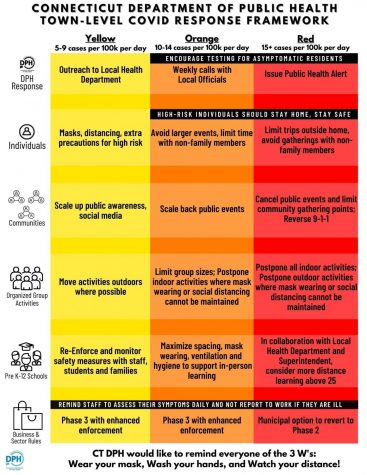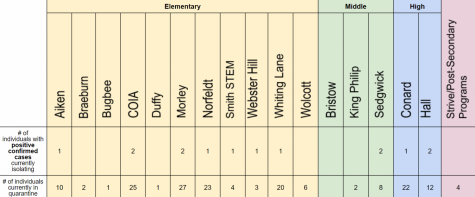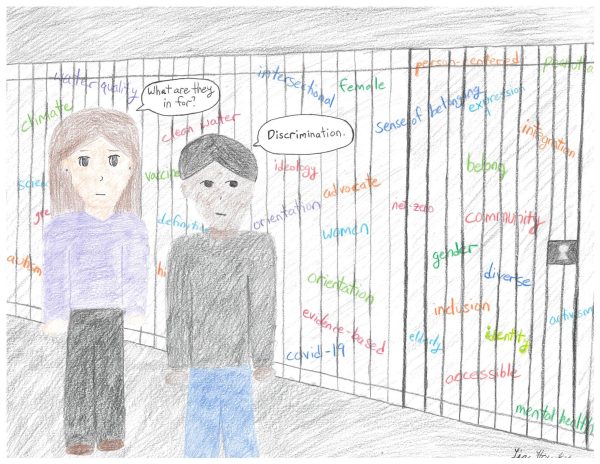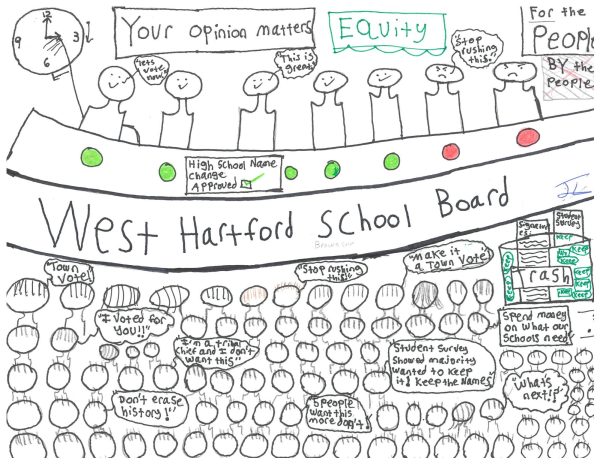Why Hybrid 2.0 Was Inevitable
When Hybrid 2.0 was introduced to begin on November 11, student reactions were mixed. But why were the changes to Hybrid 1.0 necessary?
The 2020-2021 school year began with one goal in mind, summed up in a slogan: one year, one community. That goal has seen rise to new methods of education, necessary due to conditions at the time of their implementation. The first of these, beginning with the school year in August, advocated for a slower return to normalcy. This began with elementary schools and would have worked its way up until the entire district was back to full classrooms and high student density. Rising case numbers as fall progressed have made the transition – which would have seen every student back in class daily by now, had numbers stayed down – no longer feasible. The hybrid model was only supposed to be temporary.

“[Hybrid 1.0] was a four-to-six week plan,” said Tom Moore, Superintendent of West Hartford Public Schools. When asked about the differences between West Hartford’s approach to reopening in comparison to other towns, he explained that “[they] didn’t see hybrid as a real possibility… The state was saying into much of the summer that we [would] be open. Then [Governor Lamont] said individual districts can make individual decisions. With so much unknown at that point, we felt like the best route was to take the safest approach we could.” The move would result in “halved” quarantine times for potentially affected students, who would only miss one week of school and still be able to attend online as opposed to missing two half-weeks of in-school instruction, common elsewhere.
Since the beginning of the year, several districts (New Haven, Bridgeport, and Hartford, most notably) have changed their learning plans to ensure education in the face of increasing case numbers. Part of the reason for the change in West Hartford was the lack of instruction for those students learning completely remotely.
“We did have to make up some hours this year,” Moore said, referring to the state mandatory minimum of 900 instructional hours per year. “That [was] another reason why streaming was more attractive.” The concern was that remote-only students were feeling disconnected from their school community and teachers. Hybrid 1.0 was “uniquely designed” to facilitate a greater relationship between them.
The district has entered “uncharted waters [regarding] how hybrid might affect students,” said Dan Zittoun, Principal of Hall High school. After schools closed in March, the town was given an extremely tight schedule to figure out how the coming school year would look. Those students in their junior and senior years will remember the length of time it took to debate later start times last year; a similar debate over block scheduling unfolded ten and twenty years ago, to similar results. After consulting with everyone who would be affected by changing the way schedules were done, including meetings and surveys over the course of a year, no change was decided on in the end. This summer, there was “no luxury” of time or resources to perform the surveys and compile data, Zittoun said. When it became clear the mode had to change because case numbers were not improving, “the decisions were made for you;” by the time he could talk to the student-faculty committee, the transition was “non-negotiable”.
As far as returning to normal scheduling—that is, having more students in the building than less—the elementary schools have returned to their previous capacity, the way they were intended to in Hybrid 1.0. The concerns surrounding elementary schoolers are less pronounced than middle or high school students. The schools themselves are less densely populated, and careful monitoring of cases has permitted them to stay as low as is possible.

Older students are less easy to monitor in the same way and are more able to remain focused on tasks even if there isn’t supervision, a concern surrounding elementary school students stuck at home under the original hybrid plan.
There may be hope for the rest of this year yet, however: Moore is hopeful that if case numbers go down and a vaccine is made widely available, students in middle and high school may be able to return to normal as soon as Quarter 4 of 2021, following a series of additional adjustments involving getting more students back into school and proximity, case numbers willing. The optimism is still tentative, though, because if there’s been any lesson learned through the last few months, “we’ll have to see what the disease does.”





